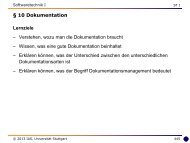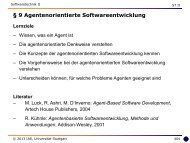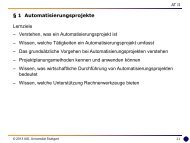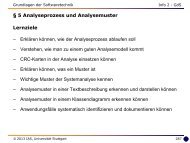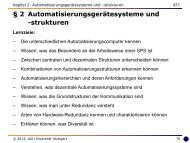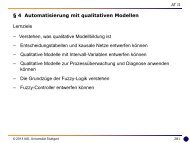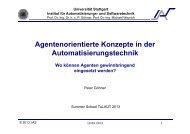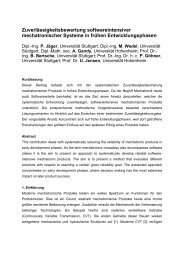Grundlagen FlexRay - Institut für Automatisierungs- und ...
Grundlagen FlexRay - Institut für Automatisierungs- und ...
Grundlagen FlexRay - Institut für Automatisierungs- und ...
You also want an ePaper? Increase the reach of your titles
YUMPU automatically turns print PDFs into web optimized ePapers that Google loves.
<strong>Gr<strong>und</strong>lagen</strong> <strong>FlexRay</strong> BasicsV 1.1 25<br />
Figure 2.20 <strong>FlexRay</strong> Startup CANoe log file<br />
2.8 Synchronization<br />
A precondition for using the TDMA method is a synchronized bus. For this, <strong>FlexRay</strong> uses a<br />
mechanism for distributed clock synchronization, i.e. as shown in Figure 2.21 , every node<br />
derives the cycle clock from its own clock<br />
Figure 2.21 Synchronization of the ECUs [VeSc11]<br />
For adjusting the local timer, a combination of offset- and frequency-adjustment is used, see<br />
Figure 2.22 and Figure 2.23. By combining these methods it is ensured, that the local times of<br />
all nodes are almost identical at one point of time, and don’t diverge while time progresses.<br />
Bäurle 12.10.2012





